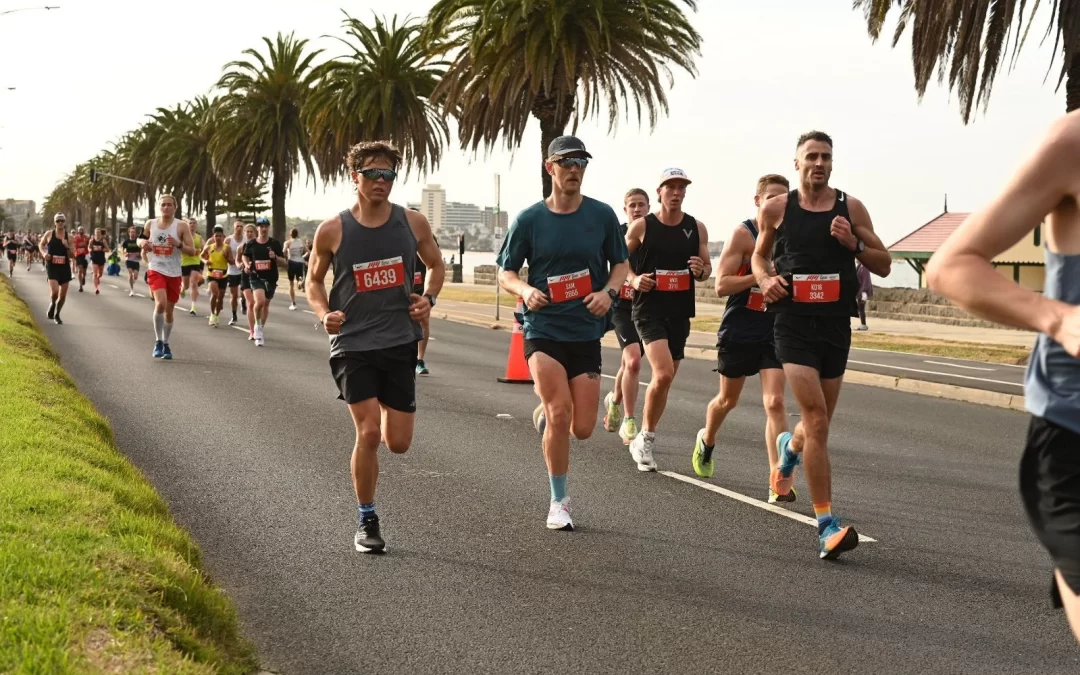Whether training for your first or 10th marathon, your choice of footwear for both training and race day is imperative not only for performance, but to reach the start line in the best possible condition ready to perform your best.
Depending on your own personal targets and goals I would recommend anyone training for a marathon will need at least 2 shoes in their rotation (at a minimum). However, for most and including in my personal experiences, the more the merrier! Let’s explain why?
Rotating footwear will see the following benefits:
Shoe rotation can lessen injury risk – Let’s face it, running involves a lot of repetition to your joints and tendons. Different geometries of footwear will allow a slight shift in mechanics across the body, inducing minor changes on your running form, ideally contributing to a lower risk of overuse injury. Consider alternating shoes with differing stack heights and heel pitch; shapes such as rocker vs traditional joggers; and foam durometer’s (hardness).
Rotating shoes and wearing them correctly will increase their longevity – The foam within a shoe takes some time to rebound following use. Rotating footwear will prolong the life of shoe and most likely save you money over the long term.
Additionally, using your running shoes strictly for running only will prolong their lifespan. Day to day use and walking will compress the foams in a different way than that of running which can be detrimental to good running form. Once your shoe has reached their used by date, these shoes can be ‘retired’ to your regular walks to the shops and use in the garden.
Using the right shoe for the right session – Some shoes are designed for different purposes. Marathon training involves the use of different types of running training, therefore using the right shoe for the task will enhance performance and improve recovery.
Considerations for different runs include the following:
Long runs – With significant km’s, runners should usually aim for a shoe that is nice and comfy, cushioned but not too clunky and possibly a shoe with a rocker. It’s all about getting through the long run as comfortably as possible with the least stress on the joints and allow for continued training at the significant loads required for marathon training. Shoe choice can vary quite a bit, but for runners in a two-shoe rotation, it will most likely be the same shoe used in recovery runs.
Tempo runs – Look for a shoe that has a combination of comfort with something that is poppy with the feeling of providing energy return when compressed at midstance, without losing that feeling of control. It may be a shoe with a slightly more responsive foam and lower heel pitch when compared to a shoe used during recovery runs.
Easy/recovery runs – A well cushioned/controlling shoe that is softer and stable ride. Consider different geometries – for example in a multi shoe rotation (3 or more), if your tempo shoes employ an aggressive rocker, consider a more traditional shoe to get you working differently.
Sessions – e.g. threshold workouts/intervals – A shoe that is lightweight and snappy is best for these sessions. With such a lightweight shoe you can usually sacrifice some control for the performance gains of a more lightweight shoe.
More experienced runners may do some of their sessions in carbon plated shoes. Since the introduction of carbon plated shoes, running times have decreased dramatically at the elite level. One thought of the potential benefit of doing workouts in carbon plated shoes is it may allow for better tolerance of higher loading of quicker running, leading to better recovery following sessions and ultimately allowing for a higher tolerance of high intensity training.
Race day – This will be very much goal dependent. Quicker, more elite/experienced runners will likely be using lightweight, carbon plated shoes (possibly the same shoe used during sessions). If your aim is to reach the finish line at a comfortable pace, it will probably be a relatively new comfortable jogger/tempo shoe which allows for a good balance between comfort and performance.
Overall, there is no one size fits all when it comes to footwear choices when training for a marathon. Personally, I find a 3-4 shoe rotation is the sweet spot. When looking at footwear, always value comfort and fit of the shoe over all other factors. Use a shoe specific to your own personal needs and make sure to keep track of the milage of each shoe, turning them over before they become so worn that they become an injury risk.
If you are unsure on what footwear options best suit your own individual running needs, please feel welcome to book an appointment to discuss all things running for professional advice in helping to make your decision.
Happy running!
Kyle Dalmau
Running footwear advice with our podiatrists.
Kyle Dalmau has a particular interest in the management of running related injuries, having started his junior sporting career in athletics and football. His adult years have focused on football, but with a retirement from football at the end of 2022, Kyle has re-entered the running world and completed his first marathon at the Melbourne marathon 2023 in a time of 3:00:45. He is currently working hard at training to improve on that time and will be running at Gold Coast marathon in 2024. He loves to chat all things running and training in the clinic with his patients.
Our Podiatrist are available to provide any guidance and advice running related – it could be anything from managing skin lesions and blisters to a full biomechanical assessment, a 3D RunLab assessment advice regarding complimentary training such as strengthening and opinion and advice regarding your training loads and volumes. Make an appointment today.
